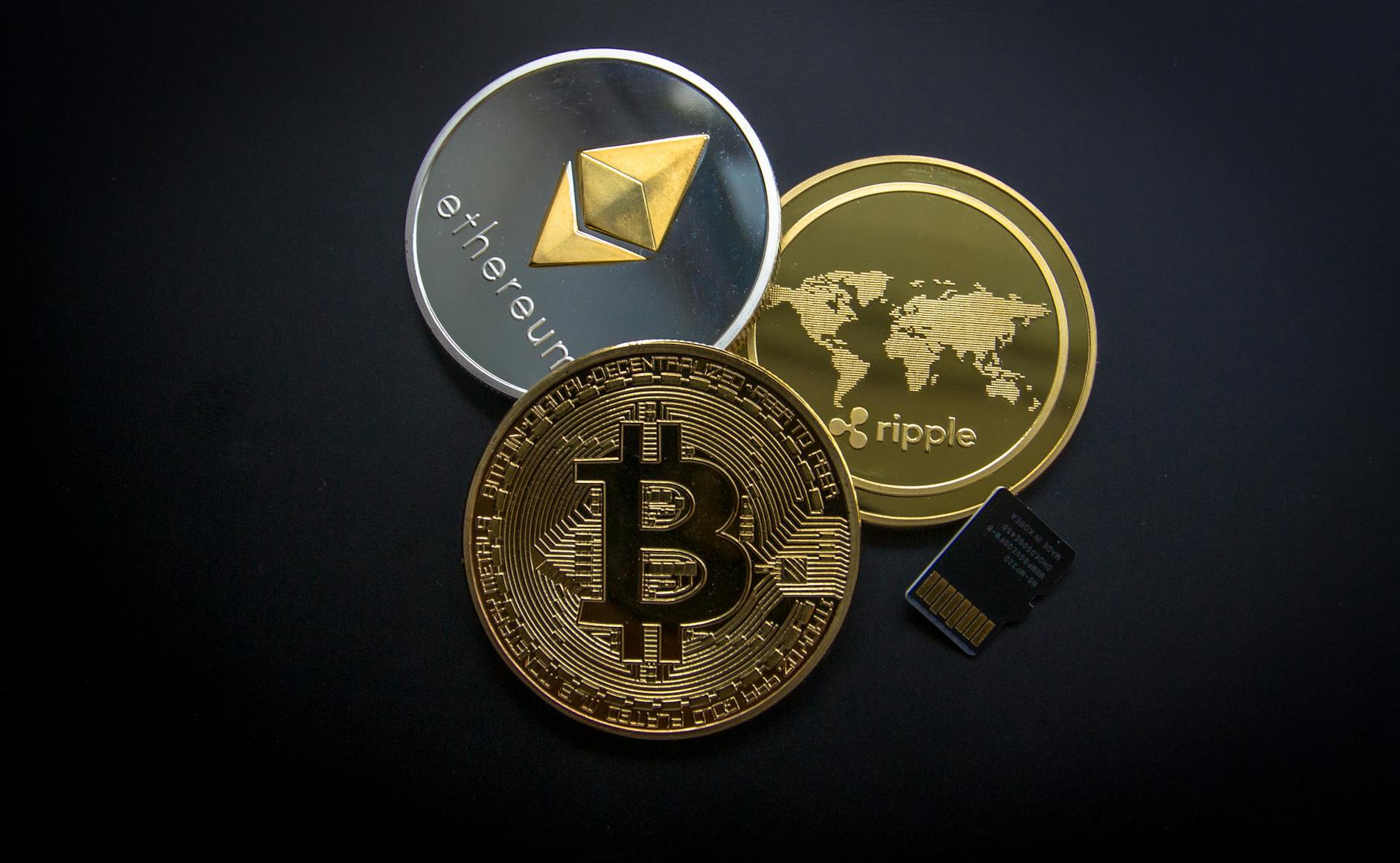The Crypto Clock Winds Down: Why Yearly Selloffs Are Dragging Digital Assets Lower
As institutions lock in profits and the Fed casts a shadow, investors face a familiar end-of-year trend.
The cryptocurrency market, often characterized by its volatility and rapid shifts, has recently found itself in a familiar, yet nonetheless impactful, downward trend. For a significant portion of the past week, major digital assets have experienced consistent price declines. This slump isn’t a sudden, inexplicable phenomenon; rather, it’s a confluence of established market dynamics, most notably the age-old practice of yearly profit-taking by institutional investors, amplified by broader economic signals. The Federal Reserve’s recent policy meeting also appears to have injected a dose of caution into the market, further contributing to the bearish sentiment.
Understanding these forces is crucial for anyone navigating the complex waters of digital asset investment. While the allure of exponential growth remains, the end of the year often brings a dose of fiscal reality, compelling even the most bullish investors to reassess their portfolios. This analysis delves into the reasons behind the recent downturn, explores the broader market context, and offers insights into what these trends might portend for the future of cryptocurrencies.
Context & Background: The Rhythms of the Crypto Year
The cryptocurrency market, despite its modern technological underpinnings, is not immune to the more traditional financial cycles that govern global markets. One of the most predictable of these is the year-end rally, or conversely, the year-end selloff. As December approaches, a significant number of institutional investors, hedge funds, and even large retail players begin to review their year’s performance. For many, the strategy involves consolidating gains, locking in profits, and rebalancing portfolios to mitigate risk before the new fiscal year begins.
This practice, often referred to as “profit-taking” or “window dressing,” can exert considerable downward pressure on asset prices. When a large volume of assets is put up for sale simultaneously, the natural economic principle of supply and demand kicks in. Increased supply, without a commensurate increase in demand, invariably leads to lower prices. In the highly liquid and interconnected world of cryptocurrency, these large-scale selloffs can have a pronounced effect across the board, impacting even those assets that might otherwise be performing strongly.
Furthermore, the cryptocurrency market is increasingly influenced by macroeconomic factors. Unlike earlier years where crypto was often seen as a more insulated asset class, it is now more closely intertwined with traditional financial markets. This means that events and policy decisions in the broader economy, particularly those emanating from major central banks like the U.S. Federal Reserve, can have a ripple effect on digital asset prices. The Fed’s stance on monetary policy, interest rates, and inflation is closely scrutinized by all market participants, and any hint of a more hawkish approach can dampen investor appetite for riskier assets, which often includes cryptocurrencies.
The source material highlights that the “Fed’s hawkish stance at the Dec. 18 policy meeting” played a role. While the specific details of this meeting and its exact impact are not provided in the summary, the implication is clear: the Fed’s commentary or actions signaled a tightening of monetary policy, potentially higher interest rates, or a less accommodative approach to the economy. In an environment where borrowing costs are expected to rise or liquidity is expected to be withdrawn, investors tend to shift away from assets that are perceived as having higher risk and thus higher potential for returns, but also higher potential for losses.
The decline in “Open Interest in major cryptos” is another significant indicator mentioned. Open interest, in the context of derivatives markets (like futures and options), represents the total number of outstanding derivative contracts that have not been settled. A decline in open interest, coupled with falling prices, can suggest that participants are closing out their positions, either by exiting the market entirely or by reducing their exposure. This further reinforces the narrative of investors reducing their positions and taking profits, contributing to the selling pressure.
In-Depth Analysis: Unpacking the Selloff Drivers
The prevailing downward trend in the crypto market over the past week is a multifaceted phenomenon, driven by a combination of cyclical investor behavior and broader economic sentiment. To truly understand its implications, we must dissect each of these contributing factors.
Yearly Profit-Taking: The Institutional Reckoning
The primary driver, as indicated by the source, is the predictable year-end selloff by institutional investors. These entities, managing vast sums of capital, operate under strict mandates and performance benchmarks. As the fiscal year draws to a close, they engage in portfolio management activities designed to optimize their year-end reports. This often involves:
- Consolidating Gains: If a particular asset has performed exceptionally well, institutions may sell a portion of their holdings to realize profits and avoid the risk of those gains eroding before the year is out. This is a standard risk management practice.
- Tax Harvesting: In some jurisdictions, selling assets at a loss can be used to offset capital gains, reducing tax liabilities. While not directly about profit-taking, it can also contribute to selling pressure.
- Rebalancing Portfolios: Investors might adjust their asset allocation to meet their target risk profiles for the upcoming year. If crypto has become an overweight position due to strong performance, they may trim it.
- Liquidity Management: Some institutions may need to return capital to their investors or meet other liquidity requirements, necessitating the sale of assets.
The sheer volume of capital that institutional investors deploy means that even a modest shift in their strategy can have a significant impact on asset prices, particularly in markets that are still considered less mature than traditional ones, like cryptocurrencies. The fact that “Open Interest in major cryptos showed weekly declines” strongly supports this narrative. When open interest in futures and options decreases, it typically signifies that traders are closing out their positions. If this is happening across the board, it points to a broader exit or reduction in exposure, aligning with profit-taking behavior.
The Federal Reserve’s Influence: A Hawkish Shadow
The mention of the “Fed’s hawkish stance at the Dec. 18 policy meeting” cannot be overstated. Central bank policy is a powerful determinant of asset valuations, especially for growth and risk assets like cryptocurrencies. A hawkish stance generally implies:
- Interest Rate Hikes: Central banks may signal or implement increases in benchmark interest rates. Higher interest rates increase the cost of borrowing, making it more expensive for businesses and individuals to invest and spend. For investors, this means that fixed-income assets (like bonds) become more attractive as their yields rise, potentially drawing capital away from riskier assets like stocks and cryptocurrencies.
- Quantitative Tightening (QT): The Fed might also signal a reduction in its balance sheet, which effectively withdraws liquidity from the financial system. Less liquidity can lead to tighter financial conditions and reduced asset prices across the board.
- Inflation Concerns: A hawkish stance often stems from concerns about rising inflation. While cryptocurrencies like Bitcoin are sometimes touted as an inflation hedge, in the short to medium term, tightening monetary policy to combat inflation can be a headwind for such assets.
The market’s reaction to the Fed’s pronouncements is often swift and significant. Investors anticipate future monetary conditions, and any indication that the Fed is prioritizing inflation control over economic stimulus can lead to a reassessment of risk appetites. This can manifest as a selloff in assets that are perceived as more speculative or growth-oriented, which has historically included the cryptocurrency market.
Interconnected Markets and Investor Sentiment
It’s important to recognize that the crypto market doesn’t exist in a vacuum. Global financial markets are highly interconnected. When traditional markets experience downturns or shifts in sentiment due to macroeconomic events, cryptocurrencies often follow suit, albeit sometimes with amplified movements. Investor sentiment, influenced by news headlines, economic data, and regulatory developments, can create a powerful feedback loop. A week marked by significant institutional selling and dovish commentary from a major central bank can collectively create a negative sentiment that permeates across various asset classes.
The decline in Bitcoin’s price, which often acts as a bellwether for the broader crypto market, would likely precede or coincide with similar movements in altcoins. If Bitcoin, the largest and most established cryptocurrency, is experiencing selling pressure, it signals a general risk-off sentiment that affects the entire ecosystem.
Pros and Cons: Navigating the End-of-Year Dip
While the current market downturn might seem purely negative, it’s essential to analyze it from multiple perspectives. Every market correction or seasonal trend presents both challenges and opportunities.
Pros (Opportunities Presented by the Downturn)
- Buying Opportunities: For long-term investors, a price dip caused by profit-taking and macroeconomic sentiment can represent an attractive entry point. Assets that have fundamentally strong use cases or technological advancements might be trading at a discount, offering the potential for significant gains when market sentiment shifts back in their favor. This is a classic strategy for many value investors.
- Reduced Market Noise: During periods of intense bullishness, speculative and less viable projects can often gain traction. A market correction can help to filter out some of this noise, allowing more robust projects to stand out.
- Testing Support Levels: Market downturns allow technical analysts to observe how key support levels hold. If major cryptocurrencies find and hold support, it can indicate underlying strength and potential for a rebound.
- Opportunity for Consolidation: For projects and developers, a market downturn can be a time to focus on building and improving their technology without the pressure of constant price speculation. This can lead to stronger, more sustainable growth in the long run.
Cons (Challenges and Risks)
- Investor Capital Preservation: For investors who entered the market at higher price points, the current decline can lead to significant unrealized losses, potentially impacting their overall financial health.
- Negative Sentiment Propagation: Fear and uncertainty can be contagious. A sustained downturn, especially when fueled by negative macroeconomic news, can lead to panic selling, exacerbating price declines.
- Impact on Smaller Projects: Smaller altcoins with less liquidity can be disproportionately affected by broader market selloffs. They may struggle to recover even when larger assets begin to rebound.
- Regulatory Uncertainty Amplified: During periods of market stress, regulators may become more vigilant, potentially leading to increased scrutiny or new regulations that could further impact the market.
- Reduced Liquidity: As traders exit positions, market liquidity can decrease, making it more difficult to buy or sell large quantities of crypto without significantly impacting the price.
Key Takeaways
- Yearly Profit-Taking: Institutional investors are a significant driver of end-of-year price declines as they lock in profits and rebalance portfolios.
- Federal Reserve Influence: A hawkish stance from the Federal Reserve, signaling potential interest rate hikes or liquidity tightening, can negatively impact risk assets like cryptocurrencies.
- Declining Open Interest: The reduction in open interest for major cryptos suggests traders are closing out positions, reinforcing the trend of reduced market exposure.
- Market Interconnectivity: The crypto market is increasingly influenced by broader macroeconomic trends and sentiment in traditional financial markets.
- Opportunity for Long-Term Investors: Market dips can present attractive buying opportunities for those with a long-term investment horizon.
- Risk Management is Key: Investors should remain aware of cyclical market behaviors and macroeconomic influences to manage their risk effectively.
Future Outlook: Beyond the Year-End
The immediate future of the cryptocurrency market will likely be shaped by the resolution of these end-of-year dynamics and the continued evolution of the macroeconomic landscape. Once the institutional profit-taking season concludes and the new year begins, we may see a shift in market sentiment, provided no new significant headwinds emerge.
The Federal Reserve’s policy path will remain a critical determinant. If the Fed signals a pivot towards a more accommodative stance or if inflation shows signs of cooling, risk assets, including cryptocurrencies, could benefit. Conversely, if inflationary pressures persist and the Fed continues its tightening cycle, further pressure on crypto prices is possible.
From a technological perspective, the ongoing development and adoption of blockchain technology, particularly for sectors like decentralized finance (DeFi), NFTs, and enterprise solutions, will continue to be a fundamental driver of long-term value. Projects that demonstrate real-world utility and sustainable growth models are likely to weather these market fluctuations better than those driven purely by speculation.
It’s also important to consider potential regulatory developments. As the crypto space matures, governments worldwide are grappling with how to regulate it. Clearer regulatory frameworks, while potentially introducing initial friction, could ultimately foster greater institutional adoption and market stability.
The market may also see a divergence in performance between different cryptocurrencies. Bitcoin and Ethereum, due to their established networks and larger market capitalization, may exhibit more resilience compared to smaller, more speculative altcoins. Investors will likely continue to focus on projects with strong fundamentals, active development teams, and clear use cases.
Call to Action
As an investor, it’s crucial to approach the current market conditions with a clear strategy and a long-term perspective. Instead of reacting impulsively to short-term price movements:
- Conduct Thorough Research: Understand the fundamentals of the cryptocurrencies you invest in. Look beyond the hype and focus on the technology, the team, and the potential use cases.
- Diversify Your Portfolio: Avoid putting all your capital into a single asset. Diversification across different cryptocurrencies and even across different asset classes can help mitigate risk.
- Dollar-Cost Averaging (DCA): Consider investing a fixed amount of money at regular intervals, regardless of the market price. This strategy can help average out your purchase price and reduce the impact of volatility.
- Stay Informed: Keep abreast of market news, technological developments, and macroeconomic trends that could impact your investments. Following reputable sources like CoinJournal can be beneficial.
- Manage Risk: Only invest what you can afford to lose. Implement stop-loss orders if trading actively, and always have an exit strategy in mind.
The cryptocurrency market is a dynamic and evolving space. Understanding the cyclical nature of investor behavior, the influence of macroeconomic policies, and the underlying technological advancements is key to navigating its complexities and capitalizing on its potential. By staying informed and employing sound investment principles, you can better position yourself to thrive in this exciting, albeit often challenging, market.









